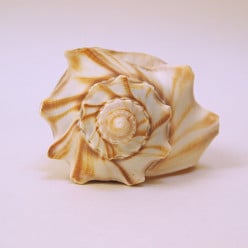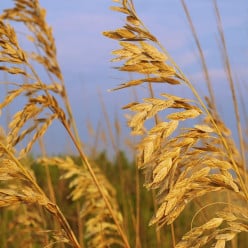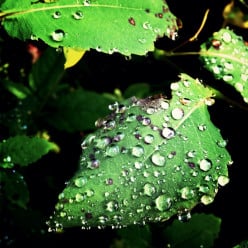The Festive Season Through Victorian Eyes
With the Festive Season Upon us – A peek into how the Victorians saw Christmas!!!
My great-great-grandfather kept a scrapbook of Victorian newspaper articles all his adult life, including newspaper cuttings from his time in America from 1845 to 1857.
He first went to Baltimore in 1845 to continue his apprenticeship in stone masonry, and finished his apprenticeship in Philadelphia. While he was in American he made a lifelong friend with the Middleton family from New York, the husband going on to become a captain in the Union Army during the American civil war.
While in America he learnt the skills of Phrenology, and on his return to Bristol, England became a professional Phrenologist for the rest of his working life (40 years) until his retirement at age 70 in 1899.
One of the Victorian newspaper clippings In his scrapbook is entitled “Victorian Christmas Items”, copied below; but as it’s difficult to read, I’ve also included a transcript below for easier reading.
TRANSCRIPT OF VICTORIAN NEWSPAPER ARTICLE ABOUT CHRISTRMAS
Victorian Christmas Items
PLUM PUDDING
Plum Pudding is probably a modification of the ancient “Christmas pie,” made of a goose and half a dozen fowls.
MINCE PIES
Mince Pies, called in the time of Queen Elizabeth “minched pies,” and to this day in Scotland “munched pies,” formed a very important item in a Christmas bill of fare. They were originally made in the shape of a crutch or cradle, to typify the manager at Bethlehem.
MISTLETOE
Mistletoe - The Druids paid – more especially at Christmas time – all the honours and reverence due to divinity to the mistletoe. The very appellation Druid is, according to Camden, derived from this particular feature of their worship. Another legend says that they adorned their houses with it, “that the sylvan spirits might repair to them, and so remain unnipped with frost and cold winds, until the milder season had renewed the foliage of their darling abodes.”
CHRISTMAS CAROLS
Christmas Carols - The word carol has come to us from Italy, and means “a song of joy.” Carol first denoted a song sang as an accompaniment to dancing, and was thence applied to a religious song used in celebration of Christmas. Carols at Christmas were early in use in the Christian Church. Tertullian says, “it was customary to place in the middle such as could sing, and call upon them to praise God in a hymn, either from Holy Writ, or of their own invention.” Religious songs or ballads in celebration of Christmas are still sung in many parts of England.
CHRISTMAS BOXES
Christmas Boxes - The custom of giving a small sum of money to servants and others on the day after Christmas, hence called Boxing-day, is doubtless founded on the custom of New Year’s gifts. Until recently it had increased to such an extent as to have become almost a national grievance. Tradesmen sent their journeymen and apprentices to levy this blackmail on their customers, and they, in turn, bestowed “boxes” on the servants of their customers. To the tradesman it was a means of increasing his Christmas bill; to the customer of lowering his servants’ wages. In 1836, the Secretary of State for Foreign Affairs issued a circular to the different embassies, requesting a discontinuance of the usual Christmas-boxes to the messengers of the foreign department and others, and from that time the practice has very much decreased.
ANCIENT CHRISTMAS CUSTOMS
Ancient Christmas Customs - It was usual, amongst our ancestors, on the night of Christmas-eve, to light up candles of uncommon size, called Christmas candles, and to lay a log of wood upon the fire, called a yule log, or Christmas block, to illuminate the fire, and, as it were, to turn night into day. Stowe says, “That in the feast of Christmas, there was in the king’s house, wherever he lodged, a Lord of Misrule, or master of merry disports; and the like had ye in the house of every nobleman of honour, or good worship, were he spiritual or temporal.” Yule seems to have been originally a Pagan festival, observed in ancient times among the Romans, Saxons, and Goths, in commemoration of the turning of the year. The custom of decking churches and houses at Christmas with laurel, box, holly, or ivy, appears to have been copied from the Pagans.
THE ORIGIN OF CHRISTMAS
The word Christmas is derived from Christ, and the Anglo-Saxon “Mas,” a holiday, or feast, and thus has come to signify a Christian feast, observed in memory of the birth of Our Saviour. The exact day of the nativity of Christ has long been a matter of dispute; but it is generally agreed that it could not have been on the 25th of December, for many reasons. It appears to be certain that the shepherds could not have been watching their flocks in the fields by night in the middle of the rainy season. Sir Isaac Newton accounts for it, by showing, that not only the feast of the Nativity, but most of the others, were originally fixed at cardinal points of the year, and that the first Christian calendars, having been arranged so by mathematicians at will, were afterwards adopted by the believers as they found them in the calendars, the object being to have a fixed time of commemoration.
Related Discussions
- 3
How are you spending this festive season?
by Carole 11 years ago
How are you spending this festive season?
- 7
Do you let loose over the festive season?
by musclequest 13 years ago
Do you let loose over the festive season?Whether your doing sport,bodybuilding or any other activity do you still train and stick to your diet over the festive season....or is that next years problems?with all the good food,alcohol and closing of gyms and facilities.how do you cope with this...if...
- 22
The Seeds of Life by Brenda Arledge
by John Hansen 2 years ago
A heart- felt and sad poem by Brenda.https://hubpages.com/literature/Poem-The-Seeds-of-LifeChristmas can be one of the saddest and loneliest times of year, Brenda, especially if we have recently lost loved ones. Lovely poem. My thoughts are with you.
- 14
Do you look forward to Christmas every year?
by Devika Primić 11 years ago
Do you look forward to Christmas every year?During the festive season you most likely want to share this time with family and good friends do you mostly enjoy this time of year and why?
- 17
What's your take on Starbucks' new cups for the holiday season?
by Jill Spencer 10 years ago
What's your take on Starbucks' new cups for the holiday season?They're bright red, feature the Starbucks' logo in green and white, and have inflamed some critics in the US and Britain, who are equating the cups with a political correctness that's tantamount to a "war on Christmas."
- 7
Festive Season
by Josep 10 years ago
Wishing everyone on hubpages a merry Christmas and a traffic filled 2015.






